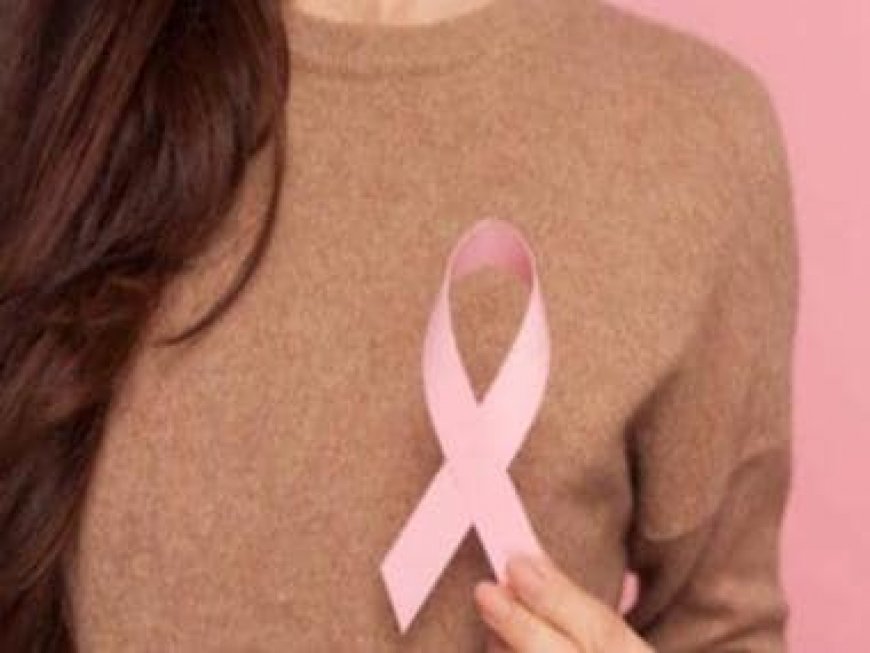Why breast self-examination is crucial for creating cancer awareness and improving survival rates
Why breast self-examination is crucial for creating cancer awareness and improving survival rates

A recent study by AIIMS suggested that 30 per cent of breast cancers were found in women below the age of 40 years. According to estimates of the National Cancer registry Programme (NCRP) of India, there will be 2,30,000 breast cancer patients annually by 2025, with a significant increase in young women with breast cancer.
When detected at an advanced stage, treating breast cancer becomes increasingly challenging and, in some instances, incurable. For example, nearly 60 per cent of breast cancer cases in India are diagnosed at stage III or IV of the disease, mainly due to a lack of awareness about the disease.
Breast Cancer accounts for 1 in 4 cancer cases and is the most common cancer diagnosed among women worldwide, early detection could significantly improve survival rates. According to the American Cancer Society, early detection of breast cancer can result in a remarkable 99% survival rate.
From conducting monthly Breast Self-Examinations (BSE) to scheduling regular clinical breast exams and mammograms, there are several ways for women to monitor early signs and symptoms of the disease.
Medical experts emphasize that performing a BSE once a month can save the lives of as many as 30-40 per cent of breast cancer patients in India.
Three methods for monthly breast self-examination
While women who are still menstruating can perform a BSE 2-3 days after their period has ended, post-menopausal women can do it either on the first or the 15th day of the month. Experts advised to begin BSE at age 20 and continue doing so on a monthly basis.
Self-test your breasts in the shower
Use three of your middle fingers and press down with light, medium and firm pressure to check one breast at a time and armpit area. This practice can be followed every month to feel for any new lumps, thickenings, hardened knots or any other breast changes.
Self-test in front of a mirror
Stretch your arms at your side and visually inspect your breasts and look for any changes in the shape of the breasts. Remember, our bodies are not necessarily symmetrical, which is why the left and right breasts will not exactly match in shape or size and that there is nothing to worry about. What you must look for is dimpling, swelling or other skin irregularities on or around the region, or any changes in the nipples.
Self-test by lying down
When you lie down place a pillow under your right shoulder and put your right arm behind your head. Now use your left hand, move the pads of your three middle fingers around your right breast, covering the entire breast area and armpit. Use light, medium and firm pressure to feel any new lumps, thickenings, hardened knots, or any other breast changes. Squeezing your nipple will help you check for any discharge.
What to do if you find something unusual
If you discover a lump during a breast self-exam, remember not to panic, as many breast lumps are benign. These lumps can vary in size, shape and texture often presenting as solid or thick areas within the breast tissue or even in the underarm region. When facing such a discovery, the next step is seeking professional help. You should promptly consult your primary care physician or a specialist, like a breast surgeon, gynecologist or oncologist for a thorough evaluation.
A complete approach to detecting breast cancer
Self-testing is an important step to detecting breast cancer and saving lives. But it is important to remember that BSE cannot replace proper medical breast examinations by an experienced doctor, mammography, ultrasound, biopsy and an MRI among others.
A professional will perform diagnostic tests, such as mammograms or ultrasounds, and may recommend a biopsy to determine the nature of the lump and provide guidance on further steps or treatments if needed. Mammography can usually detect tumours before they can be felt. An MRI gives a detailed computerised picture of areas inside the breasts. In a biopsy, a tissue or fluid is removed from the breast to be looked at under a microscope to conduct some further tests.
Practicing BSE will help you familiarise with the changes your breasts undergo over a period. At the same time, it will enable you to keep a check for any unusual growth or pain that you think needs proper attention. So, don’t wait, start your breast self-examination, today.
The author is a gynecologist at Even Healthcare, a healthcare services provider. Views expressed in the above piece are personal and solely that of the author. They do not necessarily reflect Firstpost’s views.
Read all the Latest News, Trending News, Cricket News, Bollywood News,
India News and Entertainment News here. Follow us on Facebook, Twitter and Instagram.
What's Your Reaction?



























































